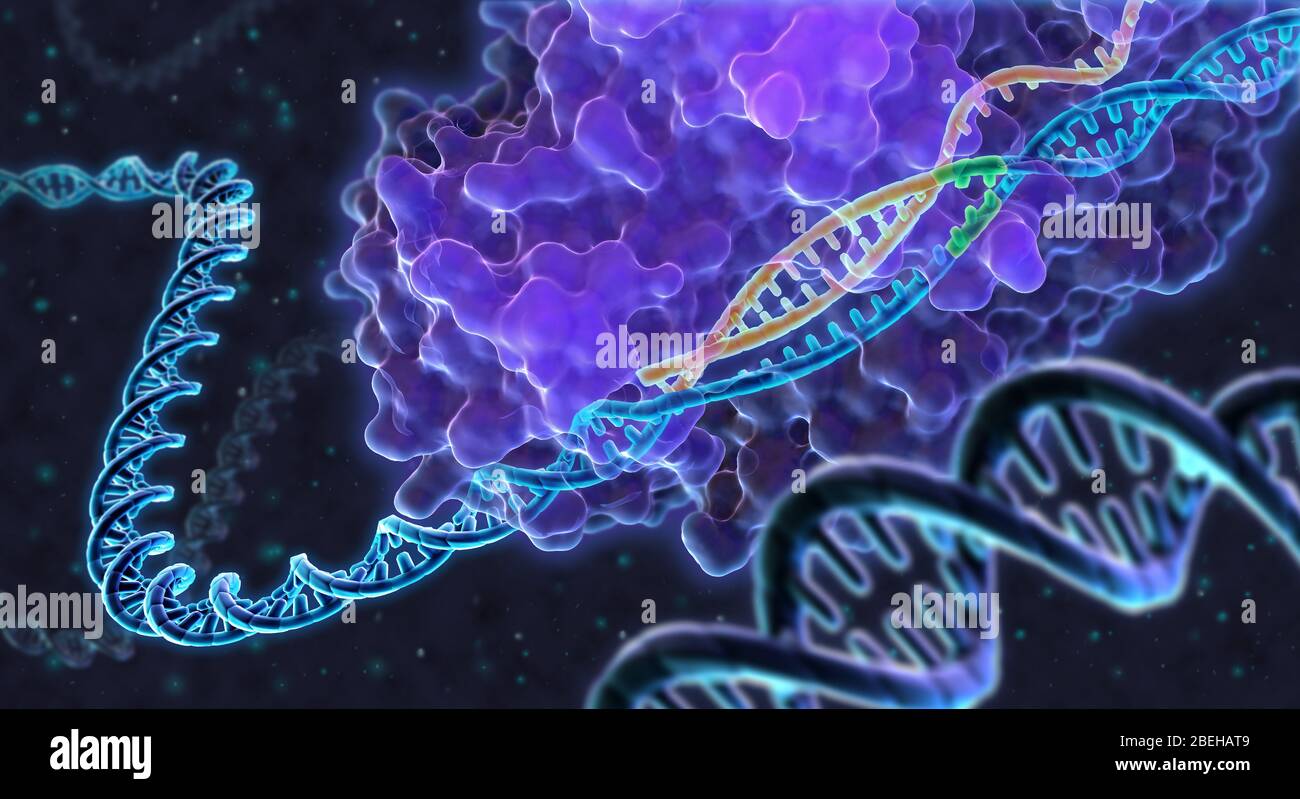A conceptual illustration of genome editing using clustered regularly interspaced short palindromic repeats (CRISPR). In order to edit a genetic sequence, a Cas9 protein (purple) attaches to the DNA of a cell using a guide RNA (orange) that matches a target DNA sequence, and separates the double helix. A protospacer adjacent motif (PAM) sequence on the cell's DNA (green) indicates where the Cas9 protein locks down and "cuts" the target DNA. Once the sequence has been cut, the DNA can be disabled or altered.

RMID:Image ID:2BEHAT9
Image details
Contributor:
Science History Images / Alamy Stock PhotoImage ID:
2BEHAT9File size:
68 MB (1.3 MB Compressed download)Releases:
Model - no | Property - noDo I need a release?Dimensions:
6600 x 3600 px | 55.9 x 30.5 cm | 22 x 12 inches | 300dpiDate taken:
9 September 2016Photographer:
Photo ResearchersMore information:
This image could have imperfections as it’s either historical or reportage.